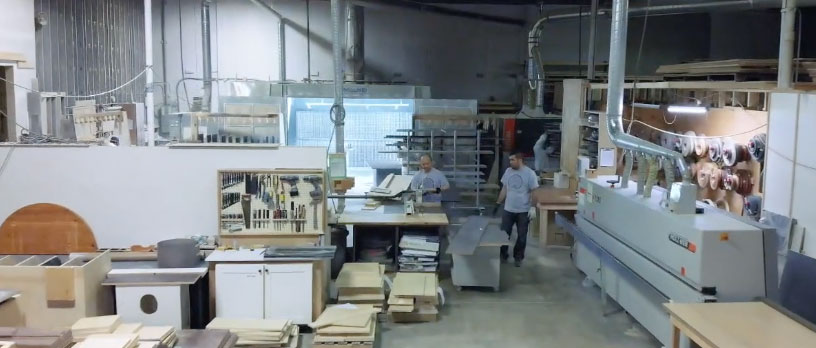In the world of kitchen design, uniformity has long been the norm. Matching metal finishes—whether in faucets, cabinet hardware, or light fixtures—was once seen as a must for achieving a polished look. However, times have changed, and modern kitchens now celebrate the beauty of contrast. The question is: how can you mix metal finishes effectively without creating visual chaos?
This guide will walk you through the art of mixing metal finishes, offering expert tips and stunning combinations to elevate your kitchen’s style. Whether you’re planning a full kitchen renovation or just updating elements like kitchen cabinets in Vancouver, this guide will help you create a stylish, cohesive space.
Why Mix Metal Finishes in Kitchen Design?
Mixing metal finishes isn’t just a passing trend—it’s a powerful design strategy that offers several benefits:
✅ Enhances Depth and Dimension – Prevents a flat, monotonous look by introducing layers that draw the eye.
✅ Creates Visual Interest – A mix of metals serves as a conversation starter, turning functional elements into stunning focal points.
✅ Reflects Personal Style – Thoughtfully combining metals showcases creativity and individuality.

Successful Metal Combinations for Kitchen Renovations
When done right, mixing metal finishes results in a harmonious and elegant kitchen. Here are some of the best combinations to consider:
1. Warm and Cool Metals in Kitchen Design
Pair warm metals like brass, gold, or copper with cool metals such as chrome, stainless steel, or nickel.
✅ Example: Brass cabinet pulls with a brushed nickel faucet create contrast without clashing.
2. Matte and Polished Finishes for Kitchens
Mix textures by combining matte finishes with polished ones.
✅ Example: Matte black light fixtures with polished chrome hardware add visual interest.
3. Stainless Steel and Brass Accents in Kitchen Spaces
Use stainless steel as a neutral base and introduce brass for warmth.
✅ Example: Stainless steel appliances paired with brass pendant lights and cabinet handles.
4. Copper and Oil-Rubbed Bronze Combinations
Both finishes offer a rich, warm tone but differ enough to create contrast.
✅ Example: A copper sink with oil-rubbed bronze faucets achieves a rustic yet sophisticated look.
Tips for Achieving a Cohesive Look with Mixed Metal Finishes
1. Choose a Dominant Metal Finish
Start with a primary metal finish as the anchor for your design—often the finish of your faucet or appliances.
💡 Pro Tip: Keep the dominant metal at 60-70% of your finishes.
2. Stick to a Cohesive Kitchen Color Palette
Coordinate metal finishes with your overall kitchen color scheme.
✔ Warm metals pair well with earthy tones.
✔ Cool metals complement grays, whites, and blues.
3. Balance the Distribution of Metal Finishes
Ensure that each finish appears multiple times throughout the kitchen.
✔ If you use brass for your light fixtures, consider incorporating it into cabinet handles or accessories.
4. Use Transitional Pieces in Kitchen Design
Bridge the gap between finishes with transitional elements.
✔ A light fixture featuring both brass and black can tie together contrasting finishes.
5. Limit the Number of Metal Finishes
Stick to two or three different finishes to maintain a cohesive look.
🚨 Warning: Too many finishes can create visual chaos!
Case Study: The Eclectic Modern Kitchen with Mixed Metals
A recent kitchen renovation showcased the power of mixed metals:
✔ Stainless Steel Appliances – Provided a sleek, modern foundation.
✔ Matte Black Handles – Added contrast and a contemporary edge.
✔ Brushed Brass Fixtures – Introduced warmth and elegance.
The result? A balanced, stylish, and timeless kitchen.
Common Mistakes to Avoid When Mixing Metals
🚫 1. Ignoring Your Kitchen’s Overall Style
Your metal finishes should complement your kitchen’s design.
✔ A farmhouse-style kitchen benefits from warm metals like copper and brass over sleek chrome.
🚫 2. Using Too Many Finishes
Limit yourself to three finishes max to prevent a cluttered look.
🚫 3. Overlooking Lighting in Kitchen Design
Lighting significantly impacts how metals appear. Test finishes under different light conditions before finalizing your choices.
Conclusion
Metal finishes aren’t the only way to personalize your kitchen—custom cabinetry plays a major role in achieving a unique and stylish design.
🔹 Explore custom kitchen cabinets for a seamless blend of functionality and aesthetics.
🔹 Check out the latest kitchen cabinet color trends for 2025 for inspiration.
🔹 Discover the benefits of an extendable kitchen island for a versatile space.
Connect with Us on Social Media!
For more kitchen design inspiration, follow us on social media:
📌 Facebook – Get the latest updates on kitchen trends and projects.
📌 Instagram – Explore stunning kitchen transformations and ideas.
📌 LinkedIn – Connect with our team of kitchen design experts.
📌 Houzz – Browse our portfolio of high-end kitchen designs.
📌 Google Maps – Visit our showroom and get started on your dream kitchen.
Final Thoughts
Mixing metal finishes is a modern and stylish approach to kitchen design, adding depth, character, and visual interest. By carefully selecting and balancing finishes, you can create a space that feels both intentional and personal.
Looking to enhance your kitchen even further? Explore high-end kitchen cabinets in Vancouver to complement your metal finishes beautifully.
Need expert advice? Contact us today for a consultation and start designing your dream kitchen!





